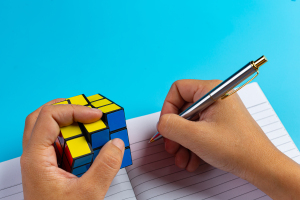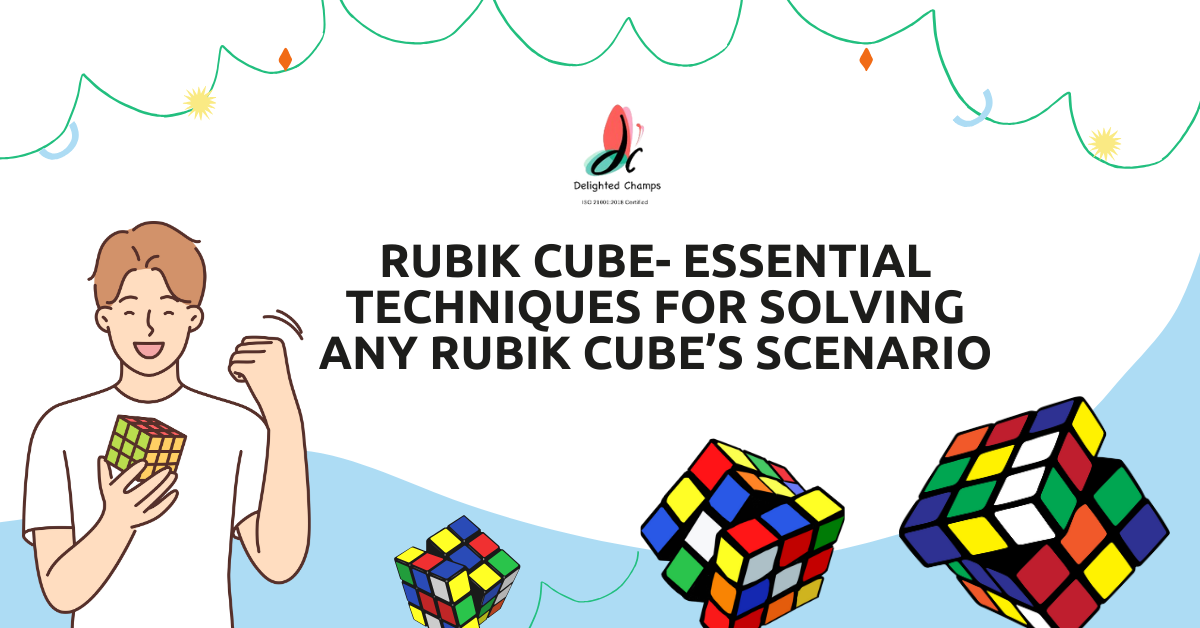The Rubik’s Cube – a seemingly simple 3×3 puzzle, has been a source of curiosity and engagement for people of all ages. But behind the colorful cube, lies a world of complex algorithms and satisfying solutions.
Whether you are a complete beginner or an experienced cuber looking to improve your speed, learning Rubik Cube shouldn’t be a challenge for you. This informative blog is for you! We’ll delve into the essential techniques needed to solve any Rubik’s Cube scenario.
1. Building the Foundation- Beginner Techniques
- The White Cross: This is the first step – forming a white cross on one face. There are various beginner-friendly algorithms readily available online or in tutorials.
- The First Two Layers: Once you have the white cross, it’s time to tackle the first two layers. This involves positioning the edge pieces correctly according to their color. Again, there are well-documented algorithms for this stage.
- Orienting the Last Layer Corners: Now, focus on the top layer. Here, you’ll need to correctly position the corner pieces while maintaining the solved first two layers.
- The Last Layer Edges: The final step! This involves arranging the last four edge pieces in their proper positions to achieve a complete solution.
2. Beyond the Basics- Advanced Techniques

For those seeking to shave off seconds from their solve times, advanced techniques offer a world of possibilities. Here are a few to consider:
- CFOP (Fridrich Method): This popular method breaks down the problem into four stages – Cross, F2L (First Two Layers), OLL (Orient Last Layer), and PLL (Permute Last Layer). Each stage utilizes specific algorithms for efficient solving.
- LL-Speedsolving: Focusing solely on the last layer techniques (OLL and PLL) allows for faster execution during the final stage of solving the cube.
3. Practice Makes Perfect- Resources and Tips
- Online Resources: Numerous websites and YouTube channels offer tutorials, practice tools, and in-depth explanations of solving techniques.
- Timer Apps: Track your progress and challenge yourself to improve your solving times.
- Practice Regularly: Consistent practice is key to mastering the algorithms and developing muscle memory.
- Join the Community: Connect with other cubers online or in local communities to share tips, tricks, and participate in competitions.
3.1 The Journey is the Reward
Solving a Rubik’s Cube is not just about achieving the end result. It’s a journey of learning, problem-solving, and developing critical thinking skills. Embrace the challenge, celebrate your progress, and enjoy the process puzzle!
Playing with a Rubik’s Cube is like a fun adventure for your brain! Every time you mix up the colors, it’s like a new puzzle to figure out. You need to be passionate, looking at the cube and figuring out the best moves to make. The more you play, the better you get at seeing patterns and thinking ahead. It’s like training your brain to become a super problem-solver! So don’t get discouraged if it takes time.
Cheer yourself on as you get faster and solve trickier problems. Remember, it’s all about having fun and keeping your brain sharp, just like solving a really cool puzzle!




